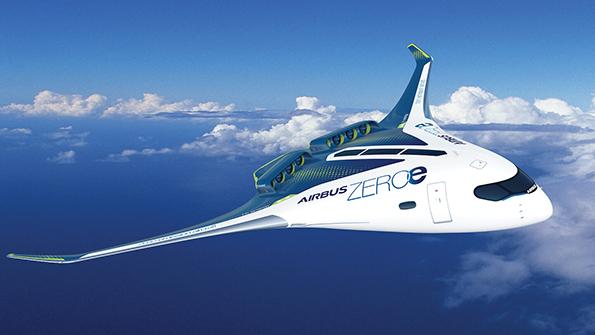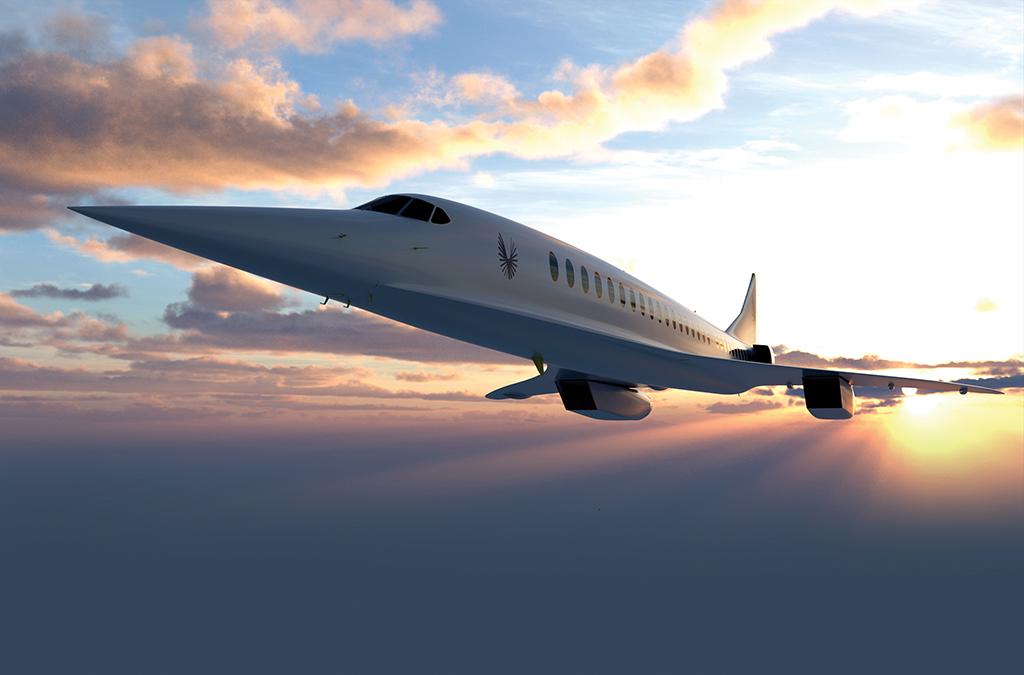

As the global air transport sector races to decarbonize, major airlines are exploring a wide variety of solutions to reduce their greenhouse gas emissions and overall effect on climate change.
For many large carriers, that means simultaneously investing across a broad range of technologies related to sustainable aviation fuel (SAF), hydrogen propulsion and electric aircraft, casting a wide net without certainty about which options will prove workable or in what capacity.
- Delta signs hydrogen airliner memorandum of understanding with Airbus
- United Airlines venture capital fund pursues host of clean technologies
- United also sees future for green supersonic jet
“At this point in the journey, it’s really important to include all potential solutions,” Amelia DeLuca, Delta Airlines’ vice president for sustainability, tells Aviation Week. “That ranges from solutions within SAF to concepts that cut across new fuels to new aircraft airframes and how our engines are constructed in the future. These are all ‘and’ solutions, not ‘or’ solutions.”
That inclusive approach to sustainability was on display when Delta announced plans on March 17 to collaborate with Airbus on joint research to explore hydrogen propulsion. As part of Airbus’ ZeroE initiative, Delta will help the OEM evaluate the pros and cons of three design concepts for a future hydrogen-powered single-aisle airliner that is targeting service entry in 2035 (AW&ST April 4-17, p. 70). Those designs include turbofan engine, turboprop engine and blended wing body concepts, all with around 100 seats and a range of roughly 1,000 nm.
Besides Delta, Airbus has also partnered with several non-U.S.-based carriers for ZeroE, including Air New Zealand, EasyJet and Scandinavian Airlines.
DeLuca says Delta’s memorandum of understanding with Airbus—which did not involve a direct financial investment—consists of three parts: the actual creation and certification of the future airliner and an evaluation of its effect on fleet allocation and airline operations; work toward developing a “hydrogen hub” concept that drives investment in green hydrogen distribution and availability at airports; and assurance that diverse stakeholders from within and without aviation all have seats at the table in plotting the future of hydrogen as a fuel source.
As a global airline with a large, diverse fleet, Delta will have to tackle a range of challenges on the road to hydrogen adoption. For example, hydrogen might be available only at certain airports, and that would have broad implications for how Delta crafts its schedule and allocates its fleet. Hydrogen propulsion will also likely come at the expense of range, because aircraft will have to sacrifice some range to accommodate larger fuel tanks. In addition, refueling may require a large safety zone of up to 20 m (66 ft.), which could increase turnaround time between flights.
Green hydrogen and renewable energy will also be required for the electrification of airport ground equipment—as well as the production of SAF—so the hydrogen research with Airbus “really cuts across everything Delta is doing” on its own Flight to Net Zero initiative, which aims to achieve net-zero carbon emissions by 2050, DeLuca explains.
“What I love about hydrogen is how it’s going to cut across many industries,” DeLuca says. She notes that Delta Chief Sustainability Officer Pamela Fletcher migrated from General Motors, where she gained “immense insight” into how to scale up green tech. “[Hydrogen also] hinges on the dependency of the availability of renewable energy, which we’ve already seen has been a priority under the Biden administration,” she adds.
Although hydrogen propulsion likely remains more than a decade away at the earliest, SAF is already certified to use as a drop-in fuel in conventional gas turbine engines, usually in a blend of up to 50% with traditional jet fuel. DeLuca says that Delta views the Biden administration’s proposal for a $1.25 per gallon blender’s tax credit for SAF as “the final U.S. government incentive that will propel forward our goals for the end of the decade.” She notes that many large-scale SAF projects aim to come online in the next 2-3 years.

United Airlines has taken investments in next-generation technology a step further: It created its own venture capital arm in February 2021. Dubbed United Airlines Ventures (UAV), the fund aims to borrow from Silicon Valley’s investment philosophy of spreading out investments in a number of startups, in hopes that some of those bets will pay off in a big way.
“When we make investments, we give them dollars from the venture fund and connect them with the larger United, so [that] when they do have a product they also get an off-take agreement, and that helps them raise debt capital,” says Mike Leskinen, United’s vice president for corporate development and investor relations and a former investment banker who now runs UAV. “I then use my contacts on Wall Street at different banks to help them raise funding and help them talk to other corporate customers of United that also might want to fund it. We do everything we can to help accelerate that incubation of technologies.”
Simultaneously investing across a range of green technologies makes sense because the future of commercial aviation will be fragmented in terms of fuel source and propulsion, Leskinen says. For example, electric or hybrid-electric powertrains could prove most useful for smaller-gauge regional jets with ranges of 250-500 nm, whereas larger-gauge, long-haul aircraft will “almost certainly” require SAF.
Hydrogen, on the other hand, will probably require a blended wing body design to accommodate the volumetric space needed to hold all the fuel, Leskinen adds. Developing that future hydrogen airliner will take much longer than the other approaches and will require greater infrastructure investment, so United is more immediately focused on SAF and electrifying regional aviation.
“Near term, SAF is absolutely going to move the needle, and electrification is absolutely going to move the needle,” Leskinen explains. “Hydrogen is a more difficult question because of that infrastructure cost. Local and federal governments are going to have to help, if and when that is built out. We argue that hydrogen is going to take longer and require more funding, and so we want to take a more pragmatic approach in the short run. That means electrification and drop-in-the-tank SAF.”
United has also invested in Boom Technology, which is aiming to develop a Mach 1.7, 65-88-seat supersonic jet with a range of 4,250 nm by 2029. The airline has placed a conditional order for 15 of the proposed airliners, with purchase options for 35 more. While some critics contend that investing in fuel-guzzling supersonic jets does not square with UAV’s larger mission of decarbonization, Leskinen insists the new aircraft will be designed to operate “in a responsible way” using 100% SAF produced by UAV portfolio company Alder Fuels.
California-based Alder is producing a SAF from biomass, including forest and crop waste, that has the potential to achieve 10% higher energy density than conventional Jet A fuel, Leskinen says. The future airliner “will be a totally green aircraft,” he adds.
“We’re going to have to source a lot more SAF, and we’re going to have to expand those feedstocks, but we’re doing that already,” Leskinen says, noting that UAV has invested in three SAF startups in the past year.
Ultimately, airlines such as Delta and United cannot know for certain which solutions will power which aircraft on which routes in the future. But by planting seeds across a broad array of platforms, they can plan for a future in which multiple modes of clean propulsion can coexist and fill different needs in terms of fleets and networks.
“We need to be prepared that electrification may work for a certain type of flying, and hydrogen may work for another, and we will likely be very much dependent on SAFs for the remainder,” DeLuca says. “SAF is definitely going to be the most important solution that we are pursuing, but we truly believe that we will run a portfolio [of products] as we move toward net zero.”


Comments
emitters (ie: China) will continue to increase emissions unabated. None of all this will have any measurable effect on world temperatures.